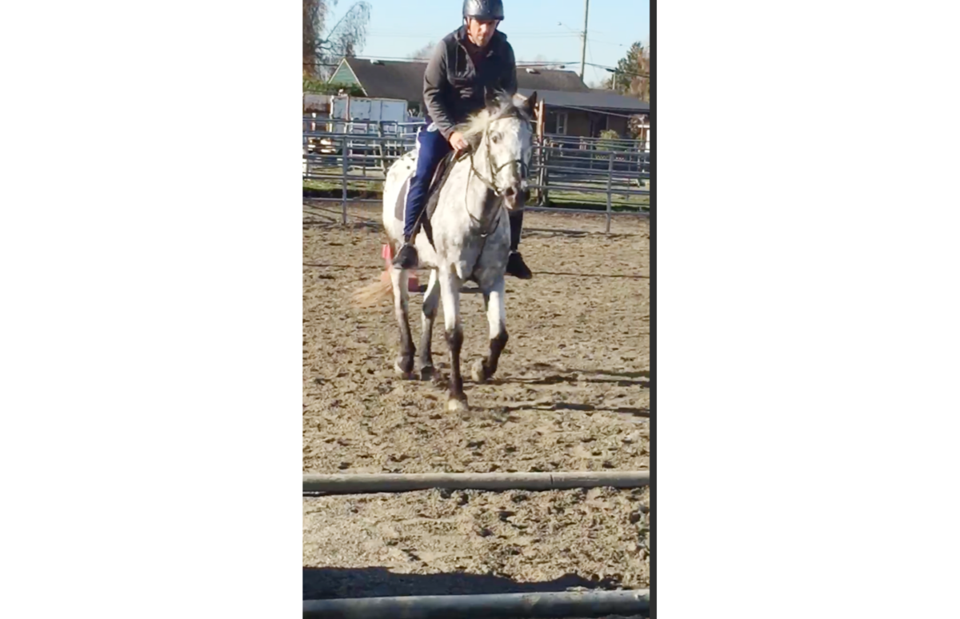In a bid to strike something off his bucket list, reporter Alan Campbell enlisted the help of Yolanda Blommers, of Blue Meadow Farm, to learn how to ride a horse.
Blommers has been using her 30 plus years of expertise to get Campbell competent in the saddle.
FOR sale: A lifelong love of horse riding.
Sold…to the author of this column.
If I hadn’t already “bought in” before my seventh lesson at Blue Meadow, I’m certainly fully invested now, both physically and emotionally.
All the brushing of sweat and dirt off the horse’s withers, picking the dried muck out of his hooves while he breaks wind, arranging all the saddle pads on his back and sticking your thumb in his wet gums to get him to take the bit.
And then there’s going through all the warmup exercises, learning where your hands and feet need to be, knowing where to look and mastering the art of making stupid clicking noises to keep your mount’s legs moving forward and the inevitable aching butt, thighs and “groin” area the next day.
All of it, every second of it (which I did enjoy, by the way), was more than worth its weight in gold when your horse, totally under your command, breaks out of his trot and floats into a “proper canter” for the very first time.
It wasn’t easy. But few things that give long-lasting pleasure come easy and you only get out of life what you put in.
As I kicked Yetter into a canter, I tried to “engage my core” and “look ahead,” as instructed by teacher Yolanda, to stop myself lunging forward and inadvertently signaling to Yetter to put the brakes on.
I lasted for about two or three strides before Yetter felt “the alarm” and slowed to a trot.
But we went again. And again, four strides then five, then more than a length of the arena for maybe seven strides.
I think I could have kept it going for a full circuit, if I wasn’t so busy admiring myself.
This is what horse riding is all about.
When I signed off my last column mentioning the upcoming lesson was number seven, my lucky number, it was an attempt to hook people in, believing they might be looking for an ironic spill from the saddle.
Sadly, for them, it was not to be.
Before the magic canter, I had to tighten the girth and adjust the stirrup length while in the saddle (not as easy as it looks).
Then there was a “serpentine of three loops” around the arena, which was thankfully drawn out on horseback by another student from the previous lesson.
Sitting trots with guide poles on the ground were set up to help me with direction and accuracy, before the requisite posting trot, with attention to “diagonals.”
We then progressed from a single trotting pole to two poles in a row, all while looking straight ahead (not down) and in the two-point showjumping position.

Prior to the lesson, I had arrived super early, as I really wanted more time to saddle Yetter myself.
It got off to another sticky start, however, when Yetter refused blind to lift his head away from his feed.
Fair play to the old boy though. If someone came to my dinner table and tried to put a halter around my neck so they could climb on my back for an hour, they’d likely get a fork stuck where the sun doesn’t shine.
The trick, as I discovered, is to put the lead rope around his neck first and gently haul him away. At the saddling enclosure, I finally managed about 90 per cent of the saddling and putting on the bridle.
The same, in reverse, could be said for the unsaddling, except putting Yetter’s winter jacket on sideways, provoking a couple of disapproving stares from him.
Still to come: Cantering for an entire circuit and the finale — a small jump. I know what you’re thinking...



